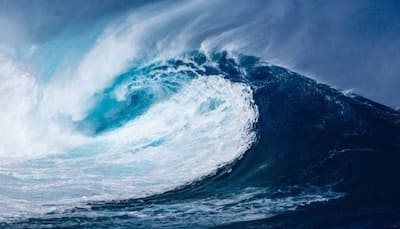A potential natural disaster is approaching from the Pacific Coast of North America, threatening that mega-tsunami may one day hit Hawaii, Alaska and Pacific Northwest, a new study carried out by Virginia Tech has warned.
According to scientists, a massive quake in the Cascadia Subduction Zone, a ticking time bomb, may trigger the mishap. The study reveals that a greater earthquake of 8.0 magnitude is likely to strike the region in the next 50 years and that there is 15 percent probably of the same.
Scientists say the quake, if occurs, could result in sudden dropping of coastal land by around 6.5 feet. It might lead to the rise in the reach and potential destruction of the possible tsunami. As a result, the researchers suggest, the waves could reach a height of 1,000 feet and travel miles deep inland. It might prove deadly for communities and cause huge damage to infrastructure.
The Cascadia Subduction Zone (CSZ) is the most powerful but an ignored tectonic boundary or faltline (also known as convergent boundary) on earth. Over centuries, it has stored enormous geological energy. When the energy gets released all at once, it can cause mega earthquakes on the planet combined with tsunamis of unprecedented size and force.
It is one of the most dangerous seismic threats in North America. Stretched from Canada’s Vancouver Island to Northern California, this is a 600-mile fault line. Lies offshore, it runs from northern Vancouver Island to Cape Mendocino in California.
The danger stems from this zone. The scientists say the Juan de Fuca Plate (a fault line) is slowly slipping here beneath the North American Plate. The process is known as subduction. Immense pressure builds over time between the plates. When it releases, the experts say, it can cause a mega earthquake, which can potentially shift the seafloor and trigger a mega-tsunami.
The previous major rupture in this zone took place over 300 years ego. Scientists are of the view that the system is now prepared for another major happening. As it takes place, the sudden decline of land along with the displacement of seawater might lead to one of the most powerful tsunamis in recorded history.
The research suggests that the areas (such as Washington State, Oregon and Northern California) that face potential threats are low-lying coastal communities built on estuaries and sediment. It makes them vulnerable to both flooding and land subsidence. If not decades, according to the scientists, recovery following such a natural disaster could take years.
“Cascadia is a unique place… the subsidence from an earthquake here could have greater long-term impacts than in many other regions that have experienced large quakes,” said the lead researcher, Tina Dura.
Different from traditional tsunamis, which generally produce waves several feet high, mega-tsunamis cause extraordinary high waves and inland reach. These waves, triggered by high geological forces such as massive undersea earthquakes or landslides, can reach a height of hundreds to thousands feet and destroy everything in their path for miles inland.
The warning is loud and clear: there is a real danger and the countdown has begun. In such a case, public awareness, planning and preparedness are something that can help save human lives and infrastructures.
Stay informed on all the , real-time updates, and follow all the important headlines in and on Zee News.




![[WATCH] IPL 2025: Vaibhav Suryavanshi touches MS Dhoni's feet post winning clash vs CSK](https://eflip.in/wp-content/uploads/2025/05/1747763070972_ms-dhoni-and-vaibhav-suryavanshi-150x150.jpeg)



